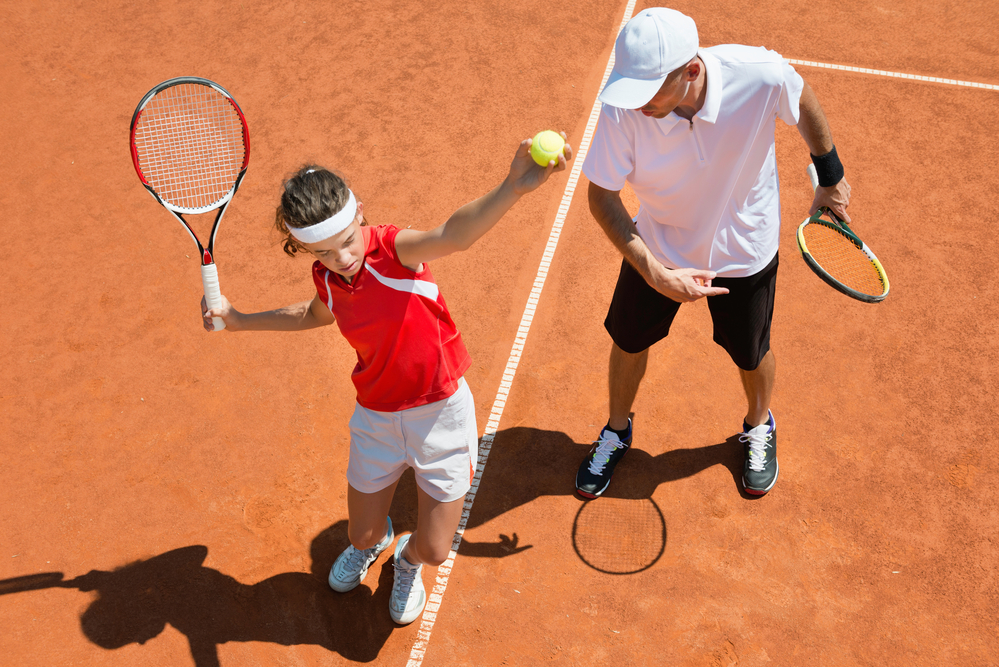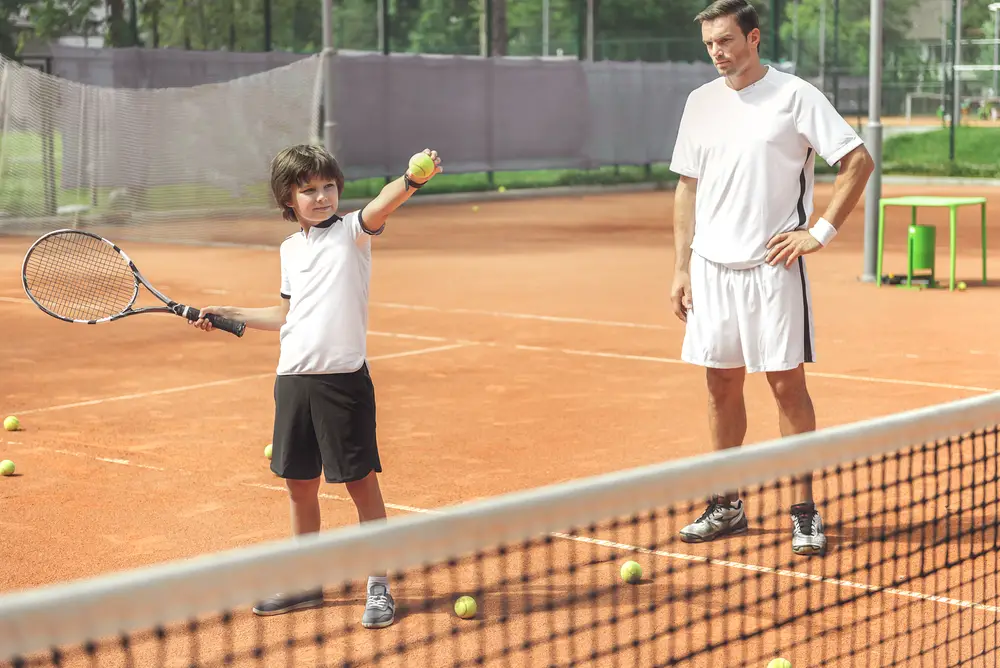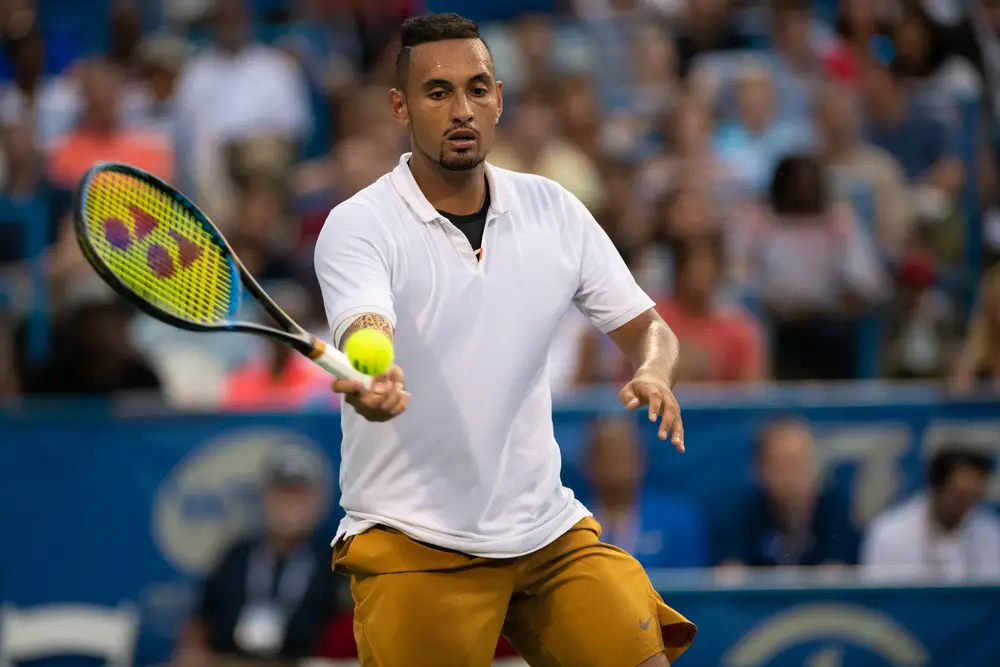I always say that service is the most critical stroke in tennis as it starts each rally.
You can learn and master different types of serves such as flat serve, kick serve or slice serve. But, and you might not know about it yet, you don’t have to serve solely overhand.
In recent years, underhand tennis serve became more popular.
It’s not a very powerful shot, but it does bring an element of surprise in crucial moments of the match; such an unusual strategy often pays off.
In tennis, you don’t have to serve overhand. It’s your own decision what way you’ll begin a point. Overhand serves provide maximum power and allow a variety of spins. Underhand serves are more limited.
If you decide to use an underhand serve at the right moment of the match, you can indeed turn the tide.
Of course, some players tend to overuse it, turning this sneaky shot into a predictable routine. Doing so, they give away one of the weapons from their arsenal.
The most successful tactic of serve is to alternate direction, speed, and spin to make your opponent confused.
Are Overhand Serves More Difficult To Underhand?

Overhand serves are much more complex and challenging to perform than underhand serves.
The underhand serve is technically very similar to a forehand groundstroke or a slice. It takes as little as one training session for beginners to learn them.
Meanwhile, they may keep on struggling with overhand serves for long weeks.
Human beings aren’t accustomed to doing any activities above head level in daily life. However, when it comes to precision tasks that overhand serve certainly is, things are even tougher.
So don’t discourage yourself from tennis if you are still learning overhand serving.
Let’s be honest; good service needs time.
Additionally, the overhand serve requires multidimensional and segmental motions of particular body parts. Any kinetic chain disruption, misconduct, or inaccuracy results in a missed shot.
When you compare underhand serve with overhand serve, it looks like a piece of cake.
There is basically one rule to succeed with underhand serve. Hit the ball the way, so bounces are low and turns off the court.
Novice tennis players aren’t capable of doing it just yet. So instead, they use topspin forehand groundstroke as a serve.
With this technique, the ball trajectory is high, giving nice net clearance. Minimal risk to make an error.
Unfortunately, the ball bounce will be high and easy for the opponent to hit back a thunder winner.
Professional tennis players have another view on underhand serve, however. This shot has to hold the returner back from taking control over the point.
The only way to do it is to push them to contact the ball below the level of the net.
That is the reason why tournament players use slice shots as their underhand serves.
By adding sidespin, they ensure that the ball will slide and turn right on the bounce. It’s not so easy to do, though.
The ball trajectory should be nearly parallel to the court surface, so the margin of error is quite small. You have to be precise and have your slice shot skills developed to perfection.
What Are The Advantages Of Both Serves?
You are going to select a particular type of service for a reason. For example, an overhand serve is riskier, but it will help you win many points without an effort if hit well.
You can occasionally introduce the ball underhand to stun your rival and get the point even for nothing.
The main advantage of the overhand serve is the ball elevation on the contact with a tennis racket. You are welcome to smash the ball straight with all your power and still have it land in the service box.
Have a look at John Isner or Reilly Opelka in action. These tower-tall guys literally nail it.
The overhand serve also allows you to add side and topspin on the ball, making it even more difficult to receive.
No opponent likes to see the ball turn or bounce above shoulder level after contact with the court. You have to be a top-notch player to hit back a quality stroke like that.
It’s the same story with underhand serve when it comes to sidespin. But, again, the change in ball trajectory is always a problem for the opponent.
Whenever you try to return it with another spin type or alternate direction, you start to gamble.
Hitting the ball with a slice, be it service or not, should help you win some extra points on fast courts.
Slice motion makes the ball slide a bit off the court and lowers its bounce. This is so common to see at Wimbledon, for example.
What Are The Tennis Rules On Underhand Serves?

The tennis rules don’t determine what way you’re obligated to serve in terms of the swing. So you can hit the ball underhand, overhand, besides your body, or any other manner you can come up with.
However, there are some regulations you have to obey.
You must stand behind the baseline between the imaginary extensions of the center mark and the sideline.
Then you shall release the ball by hand and hit the ball before it hits the ground. Once the racket hits the ball or misses, the service motion is done.
Also, don’t forget about the shot clock. You have only 25 seconds between points to serve another ball.
Famous Pros That Served Underhand

The underhand serve was and still is widely used by famous players.
Sometimes they happen to serve like that because of injury or exhaustion. On other occasions, it’s their unique strategy.
Most importantly, the underhand serve does its job.
In 1989, Michael Chang won his title at French Open, defeating Ivan Lendl in a five-set battle. His name would be lost among the remaining champions if he didn’t decide to serve underhand. In the interview 25 years later, he clearly explained how it affected Lendl:
“So I served it in the middle, but it still had the spin. He comes in to hit a forehand, and you know, he’s so far in the court that he gets squeezed because of the spin on it.”
In fact, here is a video for you to watch.
The underhand serve is also common on professional tours nowadays.
It’s Nick Kyrgios, and then Alexander Bublik, who started using it regularly, which many rivals disapproved for apparent reasons.
So, it seems like the new generation of players continues to smuggle underhand serve into their game plans.
Final Words
The tennis serve is a fundamental shot you have to practice every single day you spend on court.
No matter how good you’re now, there is always something to improve. Saying so, if your technique is excellent, think about kicking speed up.
Many players don’t even know how beneficial it is to choose serves wisely. Every opponent has a weakness on the return.
Some will struggle with overhand kick serve, and some will hit numerous errors receiving simple underhand shots.
Next time you practice, give it a try to serve underhand. Again, experience how it feels and how comfortable you are with it, and who knows, it might be your new strategy.
Have you ever served underhand during a match?
Do you think the underhand serve is disrespectful and should be banned?

